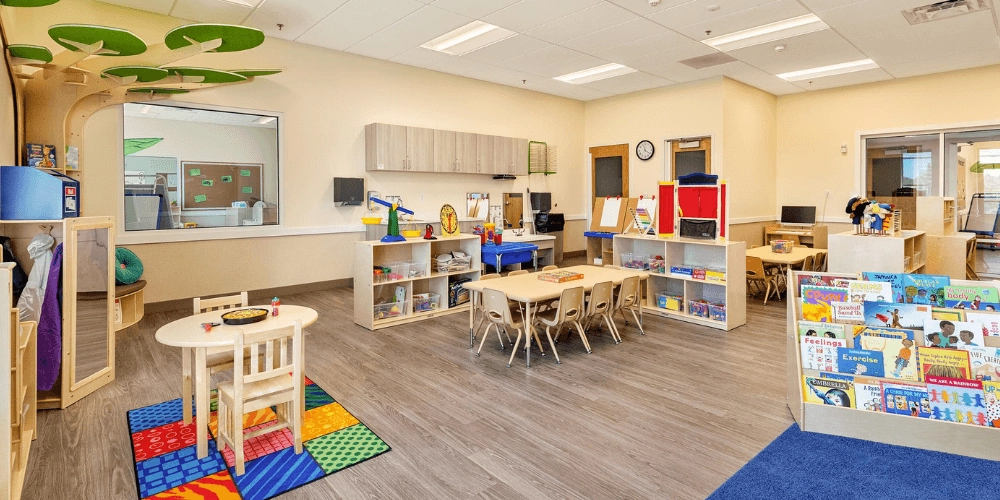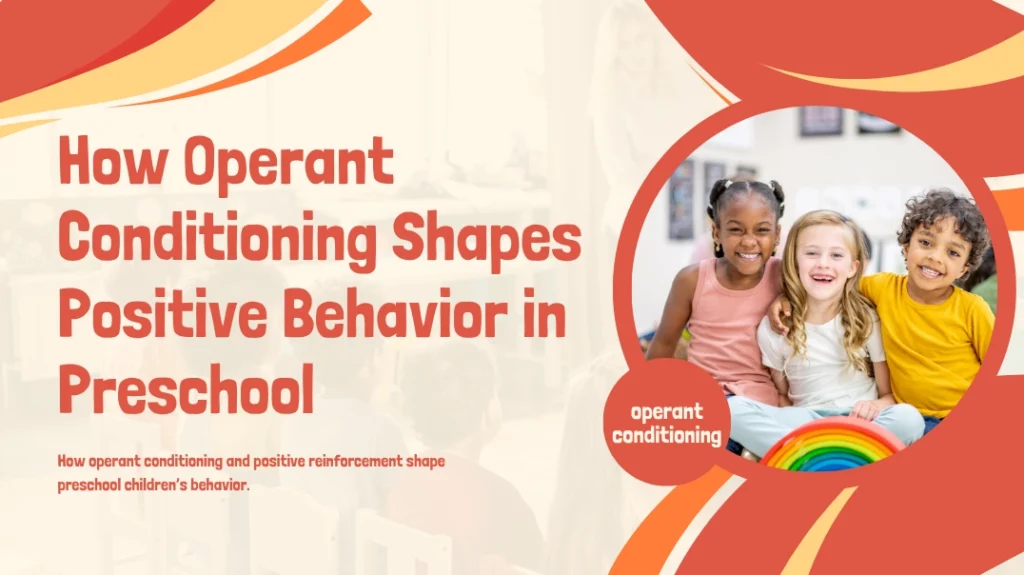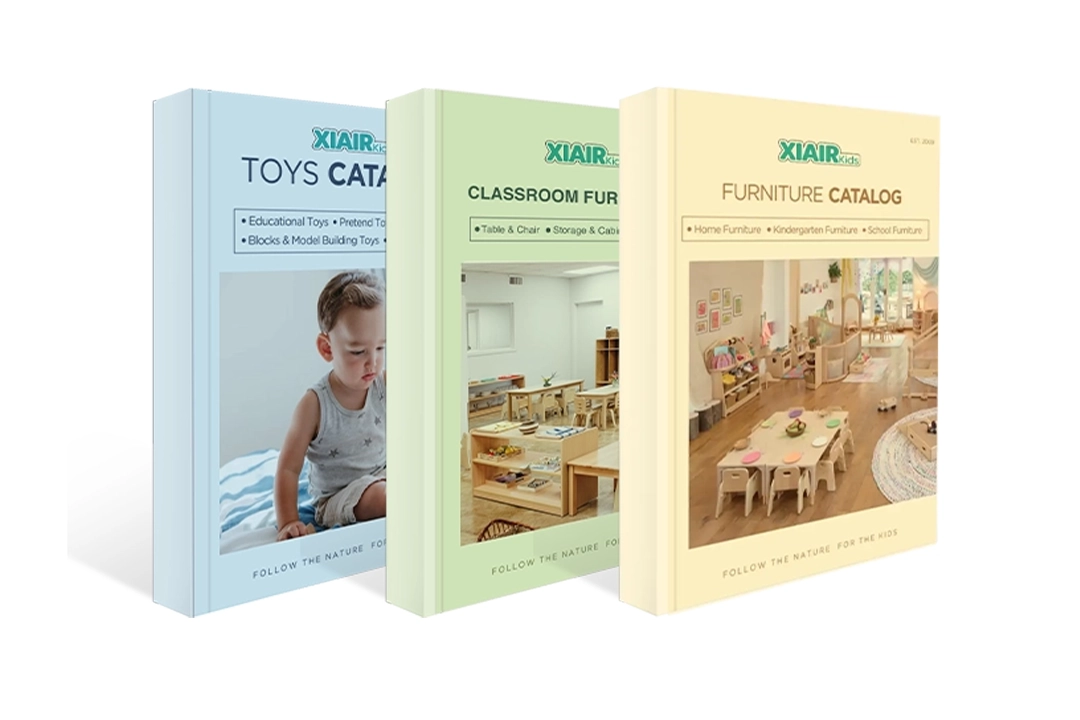Vorschullehrer und Schulleitungen haben oft mit störendem Verhalten und unregelmäßigen Abläufen im Unterricht zu kämpfen. Unerwünschtes Verhalten kann den Lernprozess unterbrechen, die Erzieher stressen und den Kindern den Aufbau positiver Beziehungen zu Gleichaltrigen erschweren. Ohne eine bewährte Vorgehensweise werden diese Herausforderungen noch frustrierender und hartnäckiger.
Werden kleine Probleme nicht angegangen, können sie sich zu einem Lawinenauswuchs entwickeln: Im Klassenzimmer herrscht Chaos, der Alltag verliert an Struktur und Kinder entwickeln möglicherweise negative Verhaltensmuster, die sie jahrelang begleiten. Eltern sorgen sich um die soziale und emotionale Entwicklung ihrer Kinder, während sich Lehrer überfordert, erschöpft und im Stich gelassen fühlen. Traditionelle Disziplinierungsmethoden oder willkürliche Belohnungssysteme mögen zunächst hilfreich erscheinen, führen aber selten zu dauerhaften, positiven Veränderungen.
Es gibt eine wissenschaftlich fundierte Methode, positives Verhalten bei Vorschulkindern zu fördern: die operante Konditionierung. Dieser wirkungsvolle Ansatz, der auf den Prinzipien von Verstärkung und Konsequenzen basiert, ermöglicht es Pädagogen, gutes Verhalten zu fördern und negatives Verhalten behutsam zu korrigieren. Durch das Verständnis und die Anwendung der Theorie der operanten Konditionierung im Vorschulbereich können Lehrer eine ruhige, unterstützende Unterrichtsatmosphäre schaffen.
Einführung
Wie lernen kleine Kinder im Vorschulalter, Regeln zu befolgen, mit anderen zu kooperieren und gute Gewohnheiten zu entwickeln? Die Antwort liegt oft darin, wie Erwachsene auf das Verhalten von Kindern reagieren, nicht nur darin, was sie sagen. Die operante Konditionierung, ein Eckpfeiler der modernen Verhaltenspsychologie, erklärt, wie Konsequenzen – sowohl positive als auch negative – Verhalten prägen. Vereinfacht ausgedrückt: Folgt auf ein Verhalten eine Belohnung, steigt die Wahrscheinlichkeit, dass es sich wiederholt. Folgt darauf eine Konsequenz oder wird es ignoriert, sinkt die Wahrscheinlichkeit.
BF führte erstmals die Theorie der operanten Konditionierung einSkinner glaubte, dass fast alle Verhaltensweisen – selbst die von sehr kleinen Kindern – erlernt werden und durch systematische Verstärkung und Konsequenzen verändert werden können. Diese Theorie ist nicht nur für Labore oder Lehrbücher gedacht; sie ist ein praktisches Werkzeug, das Lehrer und Eltern täglich im Vorschulunterricht anwenden können.
Von „positiver Verstärkung“ (wie Lob oder Aufklebern) bis hin zu „Formung“ (schrittweises Erlernen komplexer Fähigkeiten) bietet operante Konditionierung Pädagogen klare Strategien, um gute Gewohnheiten zu fördern, problematisches Verhalten zu reduzieren und ein förderndes Umfeld zu schaffen. Sorgfältig angewendet, verwandeln diese Techniken Vorschulklassen in Räume, in denen Lernen Freude bereitet und Verhaltensprobleme beherrschbar sind.
In diesem umfassenden Leitfaden untersuchen wir, was operante Konditionierung bedeutet, warum sie in der frühkindlichen Bildung wichtig ist und – was am wichtigsten ist – wie Sie sie nutzen können, um die Entwicklung von Kindern im Vorschulbereich zu unterstützen. Ob Sie Lehrer, Administrator oder sogar Elternteil sind – das Verständnis der Theorie der operanten Konditionierung gibt Ihnen ein wirksames Instrumentarium an die Hand, um kleinen Kindern zu helfen, sich zu entfalten.

Was ist operante Konditionierung in der frühkindlichen Bildung?
Operante Konditionierung ist eine wissenschaftliche Methode, um zu verstehen, wie kleine Kinder durch alltägliche Erfahrungen neue Verhaltensweisen erlernen. Vereinfacht ausgedrückt besagt die Theorie der operanten Konditionierung, dass Verhaltensweisen, die mit Belohnungen einhergehen, eher wiederkehren, während Verhaltensweisen, die negative Konsequenzen nach sich ziehen, seltener auftreten. Der Psychologe BF führte diese Idee ein. Skinner ist der Kern vieler heutiger Vorschullehrstrategien.
Im Gegensatz zur klassischen Konditionierung, die sich auf automatische Reaktionen auf bestimmte Auslöser konzentriert (wie z. B. das Zusammenzucken eines Kindes bei einem lauten Geräusch), geht es bei der operanten Konditionierung um freiwillige Entscheidungen – Handlungen von Kindern und die Ergebnisse, die sie bemerken. Im Vorschulbereich kann dies bedeuten, dass Kinder zum Teilen angeregt werden, indem man sie lobt oder ihnen eine Stickertafel zeigt, oder indem man sie freundlich daran erinnert, wenn ein Kind das Aufräumen vergisst.
Definition der operanten Konditionierung im Vorschulalter
Viele Lehrer fragen sich: „Was ist operante Konditionierung in der frühkindlichen Bildung?“ Es ist ein Prozess, bei dem positive oder negative Konsequenzen die Entscheidungen von Kindern beeinflussen. Bekommt ein Kind ein High-Five, weil es einem Freund geholfen hat, lernt es, hilfreiche Handlungen zu wiederholen. Führt grobes Spiel zu einer kurzen Auszeit, lernt das Kind allmählich, sanfter zu spielen.
In der Praxis geht es bei der operanten Konditionierung im Vorschulalter nicht um strenge Disziplin, sondern darum, die gewünschten Verhaltensweisen konsequent zu verstärken. Richtig eingesetzt unterstützt dieser Ansatz Kinder beim Aufbau von Selbstregulation, sozialen Fähigkeiten und guten Gewohnheiten, die ein Leben lang halten.
Wie unterscheidet sich operante Konditionierung von klassischer Konditionierung?
Lehrer und Eltern verwechseln oft operante Konditionierung mit klassischer Konditionierung. Bei der klassischen Konditionierung wird eine natürliche Reaktion auf einen neuen Auslöser (wie z. B. Schläfrigkeit beim Hören eines Schlafliedes) ausgelöst. Bei der operanten Konditionierung hingegen sind Kinder aktive Teilnehmer – sie entscheiden, wie sie handeln und lernen aus dem, was als Nächstes passiert. Deshalb finden Pädagogen auf der Suche nach Antworten häufig Suchbegriffe wie „klassische vs. operante Konditionierung“, „Beispiele für operante vs. klassische Konditionierung“ und „Unterschied zwischen operanter und klassischer Konditionierung“.
Die Theorie der operanten Konditionierung hilft Pädagogen, Verhalten auf praktische Weise zu beeinflussen. Anstatt einfach auf Probleme zu reagieren, schaffen Lehrer ein Umfeld, in dem positives Verhalten wahrgenommen und gefördert und unerwünschtes Verhalten behutsam umgelenkt wird.
Schlüsselkonzepte: Verstärkung, Bestrafung und Verhaltensformung
Um operante Konditionierung im Vorschulalter zu verstehen, muss man sich mit drei zentralen Konzepten vertraut machen: Verstärkung, Bestrafung und Verhaltensformung. Diese Konzepte bilden das Rückgrat der Theorie der operanten Konditionierung und geben Lehrern und Eltern Hinweise darauf, wie sie positives Verhalten fördern und negatives Verhalten reduzieren können.
Was ist Verstärkung bei der operanten Konditionierung?
Verstärkung ist jede Reaktion, die die Wahrscheinlichkeit erhöht, dass ein bestimmtes Verhalten erneut auftritt. In der frühkindlichen Bildung wird positive Verstärkung deutlich häufiger eingesetzt als negative. Beispielsweise kann eine Lehrkraft einem Kind einen Aufkleber (positive Verstärkung) geben, wenn es Spielzeug teilt, oder Kindern fünf zusätzliche Spielminuten gewähren, wenn die Gruppe schnell aufräumt.
- Positive Verstärkung: Nach einer gewünschten Handlung etwas Angenehmes hinzufügen, wie Lob, High Fives oder ein besonderes Privileg. Dies ist die beliebteste Technik in Vorschulen, da sie das Selbstwertgefühl stärkt und Kinder motiviert, gutes Verhalten zu wiederholen.
- Negative Verstärkung: Etwas Unangenehmes wegnehmen, um ein bestimmtes Verhalten zu fördern. Wenn ein Kind beispielsweise ruhig sitzt, kann der Lehrer die wiederholte Erinnerung unterlassen und dem Kind zeigen, dass ruhiges Verhalten zu einem angenehmeren Unterrichtsverlauf führt.
Zu den häufigsten Suchanfragen zählen „operante Konditionierung – positive Verstärkung“, „Beispiele für operante Konditionierung im Klassenzimmer“ und „Verstärkungspläne für operante Konditionierung“. Sie alle unterstreichen, wie zentral Verstärkung im Vorschulalltag ist.
Negative Verstärkung vs. negative Bestrafung: Was ist der Unterschied?
| Negative Verstärkung | Negative Bestrafung | |
|---|---|---|
| Was ist das? | Entfernen eines unangenehmen Reizes, um ein Verhalten zu verstärken | Entfernen eines angenehmen Reizes, um ein Verhalten zu verringern |
| Ziel | Fördern/verstärken Sie ein positives Verhalten | Unerwünschtes Verhalten unterbinden/reduzieren |
| Vorschulbeispiel | Lehrer stoppt lauten Lärm, wenn ein Kind höflich fragt | Lehrer entzieht Kindern die Spielzeit, wenn sie stören |
| Wie sich das Kind fühlt | Erleichterung oder Trost (etwas Schlimmes verschwindet) | Enttäuscht (etwas Gutes wird weggenommen) |
| Verwandte Stichwörter | negative Verstärkung, operante Konditionierung, positives Verhalten | negative Bestrafung, operante Konditionierung, Verringerung schlechten Verhaltens |
Was ist Bestrafung bei der operanten Konditionierung?
Bestrafung ist in der operanten Konditionierung eine Konsequenz, die die Wahrscheinlichkeit eines Verhaltens verringert. Vorschullehrer setzen Bestrafung heute mit Bedacht ein und konzentrieren sich mehr auf Anleitung als auf Bestrafung.
- Positive Bestrafung: Nach unerwünschtem Verhalten etwas hinzufügen, was Kindern nicht gefällt – beispielsweise eine mündliche Erinnerung oder eine kurze Auszeit.
- Negative Bestrafung: Entzug eines Privilegs, wie etwa der Runde mit einem Lieblingsspielzeug, um eine bestimmte Handlung zu verhindern.
Es ist wichtig zu beachten, dass Bestrafungen im Kindergarten immer sicher, respektvoll und niemals hart sein müssen. Ziel ist es, zu lehren, nicht zu erschrecken oder zu beschämen. Die meisten Kindergärten setzen auf positive Verstärkung statt auf Bestrafung, da Studien zeigen, dass dies länger anhaltende und positivere Ergebnisse bringt.
Verhaltensformung: Kleine Schritte zu großen Veränderungen
Verhaltensformung ist ein zentrales Instrument der Theorie der operanten Konditionierung. Anstatt perfektes Verhalten über Nacht zu erwarten, unterteilen Lehrer Aufgaben in kleine Schritte und belohnen Fortschritte auf dem Weg dorthin. Wenn es einem Kind beispielsweise schwerfällt, im Stuhlkreis ruhig zu sitzen, kann der Lehrer es zunächst dafür loben, dass es nur eine Minute lang still sitzt, und dann die Erwartung langsam steigern, wenn sich das Kind verbessert.
Verhaltensformung ist besonders wirkungsvoll in Vorschulen, wo Kinder in ihrem eigenen Tempo lernen und jeder Fortschritt Ermutigung verdient. Dieser Ansatz wird in der wissenschaftlichen Literatur auch als „sukzessive Approximation“ bezeichnet.
Verwendung von Belohnungen und Werkzeugen im Klassenzimmer
Effektive Strategien der operanten Konditionierung nutzen eine Vielzahl von Werkzeugen. Belohnungstafeln, Stickertafeln und einfache „Materiallisten“ machen die Verstärkung sichtbar und konkret. Spezielle Räume wie eine Ruheecke geben Kindern die Möglichkeit, sich zu sammeln und Selbstregulation zu üben, indem sie positives Verhalten mit einer unterstützenden Umgebung verbinden.
Die Bedeutung von Konsistenz bei Belohnungen und Konsequenzen im Klassenzimmer
Konsistenz ist ein wesentlicher Bestandteil der erfolgreichen Theorie der operanten Konditionierung im Vorschulbereich. Kinder fühlen sich sicherer und lernen schneller, wenn Belohnungen und Konsequenzen jeden Tag und bei verschiedenen Lehrern oder Betreuern gleich sind.
Wenn beispielsweise ein Lehrer einen Aufkleber für das Handheben verteilt, ein anderer Lehrer diese Aktion jedoch ignoriert, werden die Kinder verwirrt und das positive Verhalten wird weniger wahrscheinlich haften bleiben. Inkonsistente Konsequenzen können auch die Klassenführung erschweren.
So bauen Sie ein konsistentes Belohnungssystem auf:
- Alle Lehrer und Assistenten sollten sich auf Klassenregeln und die spezifischen Belohnungen oder Konsequenzen für bestimmtes Verhalten einigen.
- Eltern können in den Prozess einbezogen werden, sodass zwischen Elternhaus und Schule Harmonie herrscht und Verstärkung und Bestrafung noch wirksamer werden.
- Die Verwendung visueller Hilfsmittel, wie beispielsweise einer Verhaltenstabelle oder einer ausgehängten Liste mit den Erwartungen an die Klasse, kann dazu beitragen, dass alle auf dem gleichen Stand bleiben.
Viele Leitfäden zur Unterrichtsführung mit operanter Konditionierung betonen diese Konsistenz als Schlüssel zu langfristigen positiven Ergebnissen.
Zusammenfassend lässt sich sagen, dass operante Konditionierung im Vorschulalter auf einem Gleichgewicht aus Verstärkung, sanfter Bestrafung und konsequenter Formung beruht. Mit Geduld und Sorgfalt angewendet, helfen diese Prinzipien Kindern, zu kooperativen, selbstbewussten Lernern heranzuwachsen.

Geschichte und Theorie: Skinners operante Konditionierung einfach erklärt
Die operante Konditionierung ist eine der wichtigsten Ideen in der Psychologie und der frühkindlichen Bildung. BF entwickelte die Theorie. Skinner, ein amerikanischer Psychologe, war in den 1930er und 1940er Jahren aktiv. Skinner wollte verstehen, wie Menschen und Tiere Verhaltensweisen basierend auf den Konsequenzen ihrer Handlungen erlernen. Seine Forschung führte zur Entwicklung von Theorie der operanten Konditionierung, das auch heute noch in Vorschulen weit verbreitet ist.

Wer war BF Skinner?
BF Skinner, Der amerikanische Psychologe und Behaviorist Skinner ist vor allem für die Entwicklung der Theorie der operanten Konditionierung bekannt. Der 1904 geborene Skinner erforschte in seiner Karriere, wie Konsequenzen das Verhalten von Menschen und Tieren beeinflussen. Seine Experimente mit Ratten und Tauben in der berühmten „Skinner-Box“ führten zu wichtigen Erkenntnissen darüber, wie Belohnungen und Konsequenzen das Verhalten von Kindern beeinflussen – Ideen, die heute im Mittelpunkt der frühkindlichen Bildung stehen.
BF Skinner und sein Einfluss
Skinner baute auf den Ideen früherer Wissenschaftler wie Iwan Pawlow und Edward Thorndike auf. Pawlow entdeckte die klassische Konditionierung (man denke an das berühmte Experiment mit „Pawlows Hunden“). Gleichzeitig führte Thorndike das Wirkungsgesetz ein, das besagt, dass Handlungen mit positiven Ergebnissen wahrscheinlich wiederholt werden. Skinner machte jedoch einen wichtigen Unterschied: Er konzentrierte sich darauf, wie wir aktiv auf unsere Umwelt einwirken und aus den Konsequenzen lernen.
Er erfand die „Skinner-Box“, eine einfache Kammer mit einem Hebel oder Knopf, den die Tiere drücken konnten. In der Box konnte ein Tier (wie eine Ratte oder Taube) den Hebel drücken und so Futter erhalten oder einem leichten Stromschlag entgehen. Mit diesem Aufbau konnte Skinner untersuchen, wie sich das Verhalten von Tieren durch Verstärkung und Bestrafung im Laufe der Zeit veränderte.
Schlüsselprinzipien der Theorie der operanten Konditionierung
Skinners Theorie der operanten Konditionierung führte einige Schlüsselprinzipien ein:
- Verhalten wird durch Konsequenzen geprägt. Dies bedeutet, dass das, was nach einem Verhalten geschieht – Belohnung oder Bestrafung – die Wahrscheinlichkeit erhöht oder verringert, dass es erneut auftritt.
- Verstärkung verstärkt das Verhalten. Dies kann positiv (Vergabe einer Belohnung) oder negativ (Entfernung von etwas Unangenehmem) sein.
- Bestrafung verringert das Verhalten. Dies kann positiv (Hinzufügen von etwas Unangenehmem) oder negativ (Wegnehmen von etwas Angenehmem) sein.
Diese einfachen Ideen bilden heute die Grundlage der meisten Klassenraummanagementsysteme im Vorschulbereich.
Warum ist operante Konditionierung im Vorschulalter immer noch wichtig?
Im Gegensatz zur klassischen Konditionierung, bei der es eher um automatische Reaktionen geht, beschäftigt sich die operante Konditionierung mit willkürlichen Handlungen. Dies ist besonders nützlich, um kleinen Kindern Unterrichtsroutinen, Teilen, Anstehen oder Händewaschen beizubringen – alltägliche Verhaltensweisen, die aktives Lernen erfordern.
Skinners Ansatz ist auch deshalb praktisch, weil er für Lehrer und Eltern leicht anzuwenden ist. Lob, Aufkleber oder zusätzliche Spielzeit für gutes Verhalten und der ruhige Entzug von Privilegien für negatives Verhalten sind Techniken, die jeder erlernen kann.
Die Geschichte der operanten Konditionierung zeigt, wie sich eine einfache wissenschaftliche Idee zu einem wirkungsvollen Instrument zur Verhaltensformung im Vorschulbereich entwickelt hat. Von den ursprünglichen Skinner-Box-Experimenten bis hin zu den heutigen Klassenzimmern voller Belohnungstafeln und positiver Verstärkung hat die Theorie Generationen von Kindern geholfen, bessere Gewohnheiten und Selbstkontrolle zu entwickeln.
Was unterscheidet die Theorie der operanten Konditionierung?
Im Gegensatz zur klassischen Konditionierung, die oft mit Iwan Pawlow in Verbindung gebracht wird, betont Skinners operante Konditionierung freiwilliges Verhalten und die Kraft der Verstärkung. Wird ein Vorschulkind beispielsweise dafür gelobt, dass es Spielzeug teilt, ist die Wahrscheinlichkeit höher, dass es dieses Verhalten wiederholt. Werden störende Verhaltensweisen ruhig ignoriert oder umgeleitet, nehmen sie mit der Zeit in der Regel ab.
Diese einfache, aber wirkungsvolle Idee – dass Verhalten durch seine Konsequenzen geprägt wird – wurde in der frühkindlichen Bildung schnell populär. Lehrer begannen, Verhaltenstabellen, Stickersysteme und gut strukturierte Routinen zu verwenden, um positive Gewohnheiten bei kleinen Kindern zu fördern.
Wenn Sie daran interessiert sind, wie Klassenführung und Routinen das Verhalten unterstützen können, lesen Sie unsere Artikel über Vorschulklassenmanagement Und Planung des Vorschulplans bieten praktischere Strategien.
Skinners Theorie der operanten Konditionierung hat Pädagogen bewährte Werkzeuge an die Hand gegeben, um das Verhalten von Vorschulkindern zu beeinflussen und Kindern dabei zu helfen, soziale Kompetenzen und Selbstregulation zu entwickeln sowie eine lebenslange Freude am Lernen zu entwickeln.
Warum ist operante Konditionierung für Vorschulkinder wichtig?
Im Vorschulunterricht entwickeln Kinder täglich wichtige Fähigkeiten: Sie lernen, zu warten, Anweisungen zu befolgen, mit Klassenkameraden zu teilen und ihre Bedürfnisse auf gesunde Weise auszudrücken. Doch wie können Lehrer und Eltern Kindern helfen, diese Gewohnheiten und sozialen Fähigkeiten zu entwickeln? Hier wird operante Konditionierung zu einer praktischen Lösung, nicht nur zu einer Theorie.
- Schritt für Schritt gute Gewohnheiten fördern
Vorschulkinder gedeihen mit klaren Erwartungen und sofortigem Feedback. Die Theorie der operanten Konditionierung gibt Lehrern einfache, wiederholbare Werkzeuge an die Hand. Wenn ein Kind nach dem Spielen seine Jacke aufhängt oder Spielsachen wegräumt, wirkt ein Lächeln, ein freundliches „Gut gemacht“ oder sogar ein kleiner Aufkleber als sofortige positive Verstärkung. Diese kleinen Gesten bilden die Grundlage für Gewohnheiten wie Aufräumen, Händewaschen oder höfliche Sprache.
- Wutanfälle und Störungen reduzieren
Negatives Verhalten – wie das Greifen nach Spielzeug, Schreien oder die Weigerung, etwas zu teilen – ist Teil der frühen Kindheit. Anstelle von Bestrafung empfiehlt die operante Konditionierung geplante, konsequente Reaktionen. Beispielsweise vermittelt das ruhige Wegnehmen eines Spielzeugs für kurze Zeit nach einem Konflikt (negative Bestrafung) oder die Umleitung eines anderen Beschäftigungsziels dem Kind, dass bestimmte Verhaltensweisen Konsequenzen haben, aber immer auf sichere und unterstützende Weise. Mit der Zeit beginnen Kinder zu verstehen, welche Entscheidungen zu positiven Ergebnissen führen.
- Aufbau sozialer Kompetenzen durch alltägliche Interaktionen
Der Kindergarten ist ein Übungsplatz fürs Leben. Teilen, gemeinsame Spiele und Schlangestehen sind Momente, in denen operante Konditionierung am Werk ist. Wenn Lehrer kleine Gesten der Freundlichkeit oder Geduld bemerken und bestärken, fühlen sich Kinder wertgeschätzt und wiederholen diese. Durch Lob, einfache Belohnungen und faire Abläufe helfen Lehrer Kindern, zu verinnerlichen, was es bedeutet, ein guter Freund und Klassenkamerad zu sein.
- Kinder befähigen, bessere Entscheidungen zu treffen
Am wichtigsten ist vielleicht, dass operante Konditionierung Kindern hilft, ihre Handlungen mit Ergebnissen zu verknüpfen. Ein Kind lernt: „Wenn ich zuhöre, darf ich die Führung übernehmen“ oder „Wenn ich nette Worte benutze, wollen meine Freunde mit mir spielen.“ Dies sind Lektionen aus dem echten Leben, die Selbstvertrauen und Selbstkontrolle stärken – Fähigkeiten, die Kindern helfen, sowohl jetzt als auch im Kindergarten und darüber hinaus erfolgreich zu sein.
- Unterstützung unterschiedlicher Lernender im Vorschulalter
Nicht alle Vorschulkinder reagieren auf die gleichen Strategien – manche sind von Natur aus schüchtern, andere kontaktfreudiger oder energischer. Operante Konditionierung gibt Lehrern die Flexibilität, ihre Herangehensweise anzupassen. Beispielsweise kann ein schüchternes Kind, das selten etwas sagt, selbst für eine kleine Anstrengung, die Hand zu heben, mit sanftem Lob belohnt werden. Für ein sehr aktives Kind kann positive Verstärkung bedeuten, dass es für die Einhaltung der Klassenregeln zusätzliche Spielzeit im Freien erhält.
- Umgang mit Übergängen und täglichen Routinen
Viele kleine Kinder haben Schwierigkeiten mit Übergängen, wie zum Beispiel dem Übergang von der Spielzeit zum Sitzkreis oder vom Mittagessen zum Mittagsschlaf. Mithilfe operanter Konditionierung können Lehrer Übergänge in Wachstumschancen verwandeln. Beispielsweise hilft es Kindern, Routinen als positiv und vorhersehbar zu empfinden, wenn sie ein „Übergangslied“ singen und dann die erste Gruppe loben, die schnell aufräumt.
- Förderung der Unabhängigkeit und Problemlösung
Vorschulkinder lernen, mehr selbst zu tun – Mäntel anzuziehen, persönliche Gegenstände zu verwalten oder einfache Konflikte mit Gleichaltrigen zu lösen. Jedes Mal, wenn ein Kind versucht, ein Problem selbst zu lösen und dafür Ermutigung oder eine kleine Belohnung erhält, wächst sein Selbstvertrauen. Mit der Zeit helfen diese Erfahrungen Kindern, unabhängiger zu werden, was ein zentrales Ziel der frühkindlichen Bildung ist.
- Verhaltensprobleme verhindern, bevor sie auftreten
Die vielleicht stärkste Wirkung der Theorie der operanten Konditionierung liegt in der Prävention. Durch die Schaffung eines Klassenklimas mit positivem Feedback, klaren Abläufen und fairen Konsequenzen können Lehrer und Eltern problematisches Verhalten oft schon im Vorfeld verhindern. Wenn Kinder wissen, was sie erwartet, und sich sicher fühlen, verhalten sie sich eher positiv.
- Integration in Zuhause und Familie
Schließlich ist Konsequenz wichtig. Wenn Eltern und Lehrer ähnliche Strategien anwenden – gutes Verhalten loben, sanfte Grenzen setzen und Fortschritte feiern – lernen Kinder viel schneller. Regelmäßige Kommunikation zwischen Schule und Elternhaus stellt sicher, dass sich die Prinzipien der operanten Konditionierung gegenseitig verstärken und Fortschritte bedeutsamer werden.
Bei der operanten Konditionierung geht es nicht um starre Kontrolle, sondern darum, jedem Vorschulkind durch konsequente, sanfte Anleitung dabei zu helfen, zu einer selbstbewussten, fähigen und fürsorglichen Person heranzuwachsen.
Anwendungen im Klassenzimmer: Wie kann operante Konditionierung in einer Vorschule eingesetzt werden?
Die Anwendung operanter Konditionierung im Vorschulunterricht ist Kunst und Wissenschaft zugleich. Lehrer und Erzieher wenden sie täglich an, oft ohne sich darüber im Klaren zu sein, dass sie den Schritten der operanten Konditionierungstheorie von B. F. Skinner folgen. Sehen wir uns an, wie diese Prinzipien eingesetzt werden können, um positives Verhalten zu formen, soziale Kompetenzen zu fördern und eine unterstützende Lernumgebung für jedes Kind zu schaffen.
Aufbau eines positiven Verstärkungssystems
Die Grundlage einer effektiven operanten Konditionierung im Vorschulalter ist positive Verstärkung. Dies kann Folgendes umfassen:
- Verbales Lob: Einfache Worte wie „Super, dass du gewartet hast, bis du dran bist!“ oder „Mir gefällt, wie du die Blöcke aufgeräumt hast“ sorgen für sofortiges positives Feedback.
- Aufkleber, Token und Punkte: Viele Lehrer verwenden Sticker-Charts, Starboards oder Token-Systeme. Wenn ein Kind Anweisungen befolgt, einem Freund hilft oder etwas Neues ausprobiert, erhält es einen Sticker oder Token. Ab einer bestimmten Anzahl können diese gegen kleine Privilegien eingetauscht werden, beispielsweise als Klassenhelfer oder zum Aussuchen einer Geschichte.
- Zusätzliche Spielzeit oder besondere Aufgaben: Positive Verstärkung kann auch bedeuten, sich zusätzliche Zeit im bevorzugten Aktivitätsbereich zu verdienen oder die Leitung einer Gruppenaktivität zu übernehmen.
- Notizen Startseite: Wenn Sie eine positive Nachricht nach Hause schicken, können Sie die Familien in den Prozess einbeziehen und den Eltern den Wert operanter Konditionierungsstrategien in der Praxis vor Augen führen.
Wenn eine Lehrkraft ihre Kinder dazu ermutigen möchte, sich nach dem Kunstunterricht die Hände zu waschen, kann sie eine Belohnungstafel am Waschbecken aufstellen. Jedes Mal, wenn sich ein Kind unaufgefordert die Hände wäscht, darf es einen Aufkleber auf die Tafel kleben. Mit der Zeit wird so aus einer lästigen Pflicht eine Gewohnheit.
Sanfte Konsequenzen für unerwünschtes Verhalten
Die operante Konditionierung bestimmt auch, wie Lehrer auf negatives Verhalten reagieren – nicht mit harten Strafen, sondern mit wohlüberlegten, maßvollen Konsequenzen:
- Verlust von Privilegien: Wenn ein Kind sich weigert zu teilen, kann es sein, dass es für kurze Zeit nicht an der Reihe ist, sein Lieblingsspielzeug zu benutzen.
- Auszeit als Reflexion: Eine kurze Auszeit soll Kinder nicht beschämen, sondern ihnen einen ruhigen Raum geben, über ihr Handeln nachzudenken. In Kombination mit positiven Strategien hilft sie ihnen, den Zusammenhang zwischen Handeln und Konsequenzen zu verstehen.
- Natürliche Folgen: Manchmal ist das natürliche Ergebnis die beste Lektion. Wenn ein Kind beispielsweise eine Schachtel Buntstifte ausleert, wird es gebeten, beim Aufräumen zu helfen, bevor mit der nächsten Aktivität fortgefahren wird.
- Umleitung: Anstatt sich auf das Fehlverhalten zu konzentrieren, können Lehrer ein Kind auf eine neue Aufgabe umlenken und ihm so helfen, den Teufelskreis zu durchbrechen und es erneut zu versuchen.
Routine, Konsistenz und Vorhersehbarkeit
Vorschulkinder gedeihen, wenn sie wissen, was sie erwartet. Indem sie operante Konditionierung in den Alltag integrieren, geben Lehrer den Kindern Sicherheit und Selbstvertrauen.
- Klare Regeln und visuelle Darstellungen: Das Aufhängen von Klassenregeln mit Bildern hilft kleinen Kindern, die Erwartungen zu verstehen.
- Konsistente Antworten: Wenn Lehrer jedes Mal auf die gleiche Weise auf Verhaltensweisen reagieren, lernen Kinder schnell, was von ihnen erwartet wird.
- Unterrichtspläne: Durch die Verwendung einer Tagesplantafel oder von Bildern für jede Aktivität können Kinder Übergänge vorhersehen und ihr Verhalten proaktiv steuern.
Vor dem Sitzkreis kann ein Lehrer ein „Ruhesignal“ geben und diejenigen, die schnell reagieren, mit einem Kompliment oder der Möglichkeit belohnen, bei der nächsten Aktivität zu helfen.
Klassenführungsstrategien mit operanter Konditionierung
Effektives Klassenmanagement im Vorschulalter basiert auf der Theorie der operanten Konditionierung. Zu den Strategien gehören:
- Gruppenverstärkung: Belohnungen für die ganze Klasse, wie etwa ein „Murmelglas“, in dem jeder Murmeln für gutes Zuhören erhält, fördern Teamarbeit und kollektive Verantwortung.
- Individuelle Verhaltenspläne: Manche Kinder benötigen möglicherweise individuellere Förderpläne. Ein Kind, das beispielsweise Schwierigkeiten beim Teilen hat, kann mithilfe einer speziellen Tabelle seine Fortschritte verfolgen.
- Peer-Modellierung: Kinder lernen oft voneinander. Das positive Verhalten eines Kindes hervorzuheben („Schau mal, wie ruhig Sarah sitzt!“) kann andere motivieren, es ihm gleichzutun.
Anpassung an individuelle Bedürfnisse
Keine zwei Vorschulkinder sind genau gleich. Die operante Konditionierung ermöglicht Flexibilität:
- Sensible Kinder: Bei schüchternen oder ängstlichen Kindern sind sanftes Lob und kleine, private Belohnungen möglicherweise am wirksamsten.
- Aktive Lernende: Für energiegeladene Kinder können Bewegungspausen oder die Möglichkeit, bei körperlichen Aufgaben zu helfen, eine Belohnung sein.
- Kinder mit besonderen Bedürfnissen: Operante Konditionierung wird in der Sonderpädagogik häufig eingesetzt. Klare, konsistente Routinen und individuelle Förderung helfen Kindern mit Autismus, ADHS oder anderen Bedürfnissen, im Vorschulalter erfolgreich zu sein.
Integration in das Familien- und Privatleben
Die Wirkung operanter Konditionierung vervielfacht sich, wenn Lehrer und Familien zusammenarbeiten. Die Kommunikation positiver Veränderungen und Strategien zwischen Schule und Zuhause schafft Beständigkeit bei Kindern, die für die Verhaltensentwicklung entscheidend ist.
Bei der operanten Konditionierung geht es nicht um starre Regeln – es geht darum, eine positive, fördernde Atmosphäre im Klassenzimmer zu schaffen, in der jedes Kind lernt, dass gute Entscheidungen zu hervorragenden Ergebnissen führen. Durch Konsequenz, Ermutigung und ein wenig Kreativität nutzen Lehrer die Theorie der operanten Konditionierung, um jeden Tag selbstbewusste und fähige Vorschulkinder zu formen.

Eine fördernde Umgebung schaffen: Klassenzimmergestaltung und Materialien
Die Förderung positiven Verhaltens im Kindergarten hängt nicht nur davon ab, was der Lehrer sagt oder tut – es kommt auch auf den Raum, die Hilfsmittel und die Gestaltung des Klassenzimmers an, in dem jedes Kind untergebracht ist. Die Theorie der operanten Konditionierung besagt, dass Umgebungen so gestaltet werden können, dass sie gute Entscheidungen fördern und unerwünschtes Verhalten sanft umlenken. Im Kindergarten ist die räumliche Umgebung ebenso ein Lehrmittel wie der Unterrichtsplan.
Warum die Klassenraumgestaltung bei der operanten Konditionierung wichtig ist
Die Gestaltung eines Vorschulklassenzimmers beeinflusst alles, von der Aufmerksamkeitsspanne bis zur Zusammenarbeit. Offene Räume laden zu Bewegung und sozialer Interaktion ein, während gemütliche Ecken Orte zum Entspannen oder für konzentriertes Arbeiten bieten. Wenn Lehrer die Prinzipien der operanten Konditionierung anwenden, gestalten sie gezielt Räume, die positives Verhalten belohnen und Auslöser für problematisches Verhalten minimieren. Eine eigene „Ruheecke“ bietet Kindern beispielsweise einen sicheren Ort zur Selbstregulation – es geht nicht nur um Komfort, sondern darum, das Verhalten durch die Umgebung zu prägen.
Verwandt: Ruheecke
Beispiele für operante Konditionierung im Klassenzimmer
- Positive Verstärkung durch Räume und Vorräte:
Stellen Sie sich ein Klassenzimmer vor, in dem Tische für Gruppenarbeit in der Nähe des Lehrerpultes stehen. So wird die Zusammenarbeit leicht wahrgenommen und gelobt. Ruhige Leseecken sind mit einladenden Kissen und Lieblingsbüchern ausgestattet – Kinder, die sich dort ruhig niederlassen, erhalten möglicherweise zusätzliche Vorlesestunden, eine Form der positiven Verstärkung. Verhaltenstabellen, Stickertafeln und visuelle Zeitpläne können auf Augenhöhe der Kinder angebracht werden, um Routinen in tägliche Erfolgschancen zu verwandeln.
- Flexible Sitzgelegenheiten für besseres Verhalten:
Nicht jedes Kind konzentriert sich gleich. Manche brauchen Bewegung, andere sitzen lieber still. Flexible Sitzgelegenheiten – weiche Stühle, Sitzsäcke, Hocker – ermöglichen Kindern die Wahl ihrer Lernmethoden. Wenn ein Kind als Belohnung für das Befolgen von Anweisungen einen bequemen Sitzplatz wählen darf, ist das operante Konditionierung am Werk.
- Klare Grenzen für reibungslose Übergänge:
Niedrige Regale oder verschiedenfarbige Teppiche zur Abgrenzung der Aktivitätsbereiche helfen Kindern, zu erkennen, wo welche Aktivität stattfindet. Dies reduziert Verwirrung und gibt vorhersehbare Hinweise. Ein spezieller Teppich im Sitzkreis signalisiert beispielsweise, wann es Zeit ist, zuzuhören und mitzumachen, und trägt so zur Festigung von Routinen bei.
- Visuelle Hilfsmittel als Verstärker:
Pinnwände und Belohnungstafeln sind mehr als nur Dekoration – sie geben unmittelbares, sichtbares Feedback für Anstrengung und Verhalten. Wenn der Name eines Kindes auf der Tafel nach oben verschoben wird, weil es etwas teilen oder aufräumen möchte, verstärkt diese konkrete Anerkennung das gewünschte Verhalten. (Siehe Ideen für Pinnwände im Vorschulbereich)
- Organisierte Versorgungsgebiete:
Ordentlich beschriftete und griffbereite Unterrichtsmaterialien ermöglichen es Kindern, Verantwortung für die Materialien zu übernehmen. Wenn Schüler die Dinge regelmäßig an ihren richtigen Platz zurücklegen, erhalten sie möglicherweise klassenweite Belohnungen oder individuelles Lob. Das stärkt positive Routinen und die Unabhängigkeit.
Verwandt: Liste der Vorschulmaterialien
Produkt- und Möbelauswahl, die die operante Konditionierung unterstützt
Das Recht Klassenzimmermöbel kann Verhaltenstheorie in die tägliche Praxis umsetzen. Stabile, kindgerechte Tische und Stühle fördern Kooperation und Selbstständigkeit. Mit Namen oder Bildern beschriftete Ablagefächer helfen Kindern, mit ihren Sachen umzugehen und stärken so ihre Verantwortung. Gemütliche Leseecken oder schalldämpfende Trennwände können Ruhezonen für Selbstregulation oder Reflexion schaffen – wichtig für junge Lernende, die ihre Impulskontrolle entwickeln.
Wenn Ihre Vorschule über sensorische Ecken oder Ruhezonen verfügt, können modulare Möbel oder weiche Trennwände verwendet werden, um den Raum an unterschiedliche Gruppenaktivitäten und Bedürfnisse anzupassen. Diese Flexibilität ermöglicht es den Erziehern, bei Bedarf neue „Belohnungsbereiche“ oder Ruhezonen einzurichten, stets im Einklang mit den Prinzipien der operanten Konditionierung.
Verwandt: Sitzordnung im Klassenzimmer
Tipps zum Schaffen einer Umgebung mit positiver Verstärkung
- Verwenden visuelle Zeitpläne um Übergänge und Routinen zu signalisieren.
- Aufstellen Belohnungsdiagramme und aktualisieren Sie sie konsequent.
- Stellen Sie sicher, dass jeder „Belohnungsbereich“ (Leseecke, Kunststation, Ruhezone) klar definiert ist.
- Geben Sie Kindern eine Stimme – lassen Sie sie beim Dekorieren helfen oder das Thema für bestimmte Räume auswählen, um sie für positives Verhalten zu belohnen.
- Wechseln Sie die Verstärkungstools regelmäßig, damit sie spannend und sinnvoll bleiben.
Häufige Fallstricke und Lösungen
- Überfüllte Räume: Zu viele Möbel oder Unordnung verringern die Möglichkeiten für positive Verstärkung – halten Sie es offen und unkompliziert.
- Die Macht der Umwelt ignorieren: Wer sich nur auf verbales Lob verlässt, verpasst die Chance, den Klassenraum als stiller Lehrer zu nutzen.
- Inkonsistente Verwendung von Verstärkungswerkzeugen: Belohnungssysteme und visuelle Hinweise funktionieren nur, wenn sie vorhersehbar sind und täglich verwendet werden.
Ein gut gestalteter Klassenraum, gepaart mit operanter Konditionierung, schafft eine Umgebung, in der sich Kinder sicher, motiviert und befähigt fühlen, Neues auszuprobieren. Die Umgebung ist nicht nur Kulisse – sie ist ein aktiver Teilnehmer am Lernprozess jedes Kindes.
Empfohlene Klassenzimmermöbel und -werkzeuge für positive Verstärkung
Um operante Konditionierung im Vorschulalter erfolgreich umzusetzen, ist die Auswahl der richtigen Unterrichtsmaterialien entscheidend. Hier sind einige praktische Artikel, die positives Verhalten, reibungslose Abläufe und Selbstregulation in der frühkindlichen Bildung fördern:
| Produkttyp | Beschreibung und Nutzen der operanten Konditionierung |
|---|---|
| Belohnungstabellen und visuelle Zeitpläne | Helfen Sie Kindern, Erfolge und Routinen zu verfolgen, und geben Sie sofortiges Feedback. |
| Flexible Sitzmöglichkeiten | Weiche Stühle, Hocker oder Sitzsäcke ermöglichen eine belohnungsbasierte Sitzplatzauswahl. |
| Beruhigende EckmöbelBeruhigend | Gemütliche Kapseln oder Kissen zur Selbstregulierung und emotionalen Erholung. |
| Aufbewahrungsfächer und Regale | Beschriftete Aufbewahrung fördert Verantwortung und Unabhängigkeit. |
| Aktivitätszonen mit Teppichen | Abgegrenzte Bereiche signalisieren unterschiedliche Verhaltensweisen (Gruppenzeit, Ruhezeit etc.). |
| Sensorische Spielstationen | Wird als Belohnung für positives Verhalten oder selbstberuhigende Aktivitäten verwendet. |
Diese Unterrichtshilfen erleichtern nicht nur die tägliche Bewältigung, sondern verwandeln auch jede Routine und jeden Übergang in eine Lerngelegenheit und maximieren so die Wirkung der operanten Konditionierung im Vorschulalter.
Ihr perfektes Klassenzimmer ist nur einen Klick entfernt!
Der Zusammenhang zwischen Behaviorismus und operanter Konditionierung
Das Verständnis, wie operante Konditionierung in den breiteren Kontext des Behaviorismus passt, hilft Lehrern und Schulleitungen, fundiertere Entscheidungen über Unterrichtsstrategien und -materialien zu treffen. Der Behaviorismus, dessen Pioniere unter anderem B. F. Skinner und Iwan Pawlow waren, basiert auf der Überzeugung, dass alle Verhaltensweisen durch Konditionierung erworben werden. Während Pawlow sich auf die klassische Konditionierung konzentrierte – bei der Lernen durch Assoziation erfolgt –, betont Skinners Theorie der operanten Konditionierung das Lernen durch Konsequenzen und nutzt Verstärkung und Bestrafung, um freiwilliges Handeln zu formen.
Im Vorschulbereich bedeutet dies, dass sich die Erzieher darauf konzentrieren, was die Kinder Tun und wie ihre Umgebung auf diese Aktionen reagiert. Wenn ein Kind beispielsweise Spielzeug zurück in das beschriftete Fach legt, kann ein Lehrer es durch verbales Lob oder einen Aufkleber als positiven Verstärker ermutigen, dieses Verhalten zu wiederholen.
- Die Theorie der operanten Konditionierung klärt Warum Einige Klassenraum-Managementsysteme funktionieren besser als andere.
- Es leitet Pädagogen an, konsistente Routinen und sofortiges Feedback, wodurch es für Kinder einfacher wird, Verhalten mit Konsequenzen zu verknüpfen.
- Produkte wie visuelle Zeitpläne, Belohnungstabellen und flexible Sitzmöglichkeiten sind mehr als nur Dekorationen für das Klassenzimmer – sie dienen als funktionale, evidenzbasierte Werkzeuge, die das verhaltensbezogene Lernen von Kindern unterstützen.
Durch das Verständnis dieses Zusammenhangs können Vorschulleiter und Lehrer Unterrichtsmaterialien mit Zuversicht auswählen und Routinen entwickeln, die das gewünschte Verhalten verstärken und so eine fördernde, effektive und positive Umgebung für die frühkindliche Bildung schaffen.
Der Einfluss des Behaviorismus auf moderne Vorschulklassen
Behaviorismus ist nicht nur eine Theorie; er bildet die Grundlage für viele bewährte Methoden in der frühkindlichen Bildung. Viele Klassenführungstechniken, wie z. B. die Verwendung von Sternkarten oder „Beim Braven erwischt“-Systeme, basieren direkt auf behavioristischen Prinzipien. Lehrer setzen auf positive Verstärkung – einen Eckpfeiler der Theorie der operanten Konditionierung –, indem sie Kinder für hilfreiches, sicheres oder freundliches Verhalten sofort belohnen. Dies prägt die Klassenkultur, sorgt für reibungslosere Abläufe und stärkt die sozialen Kompetenzen.
Behaviorismus vs. operante Konditionierung: Wichtige Unterschiede
Während operante Konditionierung immer im Behaviorismus wurzelt, ist nicht jeder Behaviorismus operante Konditionierung. So bringt beispielsweise die klassische Konditionierung (wie Pawlows Hunde) Kindern bei, nach einem bestimmten Lied mit einer Zwischenmahlzeit zu rechnen. Im Gegensatz dazu ermutigt operante Konditionierung sie durch Lob oder eine kleine Belohnung zum Aufräumen. Im Vorschulkontext können beide Ansätze kombiniert werden: Ein Übergangslied (klassisch) gefolgt von einer Belohnung für schnelles Befolgen (operant) erzeugt einen doppelten Effekt.
Beispiele aus der Praxis für Vorschullehrer
In einem gut gestalteten Vorschulunterricht verschwimmen die Grenzen zwischen Theorie und Praxis. Ein Kind, das während der Vorlesestunde ruhig auf einem dafür vorgesehenen Teppichfeld sitzt, erhält möglicherweise einen Aufkleber oder darf die Reihe anführen. Diese Verstärkungen, ob materiell oder sozial, werden von den Lehrkräften sorgfältig geplant und basieren auf den Prinzipien der operanten Konditionierung. Flexible Sitzgelegenheiten im Klassenzimmer, beschriftete Ablagemöglichkeiten und Ruheecken unterstützen nicht nur das Lernen, sondern auch die Verhaltensregulierung.
Warum interne Konsistenz wichtig ist
Damit die Theorie der operanten Konditionierung im Vorschulbereich wirksam ist, müssen Lehrer und Erzieher konsequent vorgehen. Wird ein Verhalten an einem Tag belohnt, am nächsten aber ignoriert, kann dies die Kinder verwirren. Deshalb setzen viele erfolgreiche Schulen auf visuelle Tagespläne und klare, einfache Belohnungssysteme. Konsequenz sorgt für verlässliches Lernen und erleichtert jedem Kind den Lernalltag. Mit den richtigen Hilfsmitteln und einem klaren Verständnis der operanten Konditionierung können Erzieherinnen und Erzieher eine Klasse gestalten, in der sich Kinder jeden Tag sicher, selbstbewusst und lernbereit fühlen.
Schlüsselprinzipien des Behaviorismus im Vorschulalter
| Prinzip | Beispiel für operante Konditionierung | Vorschulanmeldung |
|---|---|---|
| Sofortige Verstärkung | Sticker zum Teilen von Spielzeug | Belohnungstabelle, Artikel der Lieferliste |
| Positive Verhaltensmodellierung | Der Lehrer demonstriert eine Aufräumroutine | Nutzung von Ablagefächern, Sitzgelegenheiten |
| Klare Erwartungen | Visuelle Stundenpläne und Unterrichtsregeln | Schwarze Bretter im Klassenzimmer, tägliche Routinen |
| Konsequente Konsequenzen | Auszeit bei Regelverstößen, Lob bei Kooperation | Ruheecke, positives Feedback in Übergangszeiten |
Herausforderungen und Missverständnisse bei der operanten Konditionierung im Vorschulalter
Obwohl operante Konditionierung eine bewährte Methode zur Förderung guter Gewohnheiten im Vorschulalter ist, ist es nicht immer einfach, sie richtig anzuwenden. Obwohl die Theorie der operanten Konditionierung eine effektive Methode zur Förderung guter Gewohnheiten bei Kleinkindern ist, ist ihre korrekte Anwendung nicht immer einfach. Viele Lehrer und Eltern stehen bei der Anwendung der Theorie der operanten Konditionierung bei Kleinkindern vor Herausforderungen und Missverständnissen.
Häufige Missverständnisse
- Missbrauch von Verstärkung und Bestrafung
Einer der größten Fehler bei der operanten Konditionierung besteht darin, zu stark auf Bestrafung zu setzen oder Verstärkung falsch einzusetzen. Manche Erwachsene glauben vielleicht, dass Bestrafung – wie Auszeiten oder das Wegnehmen von Spielzeug – Verhaltensprobleme schnell beheben würde. Studien und praktische Erfahrungen im Unterricht zeigen jedoch, dass positive Verstärkung (wie Lob, Aufkleber oder ein Punkt auf einer Belohnungstafel) auf lange Sicht viel effektiver ist. Ziel ist es, positives Verhalten zu fördern, nicht nur unerwünschtes Verhalten zu unterbinden.
- Übermäßiges Vertrauen in materielle Belohnungen
Ein weiterer weit verbreiteter Irrglaube ist, dass Kinder sich nur dann gut benehmen, wenn sie etwas dafür bekommen, wie Süßigkeiten oder kleine Spielsachen. Diese Belohnungen können zwar anfangs hilfreich sein, aber die besten Ergebnisse erzielen Kinder, wenn sie auf soziale Belohnungen wie Lächeln, High Fives und aufmunternde Worte reagieren. Mit der Zeit lernen Kinder, stolz auf ihr positives Verhalten zu sein – ein wichtiger Teil der emotionalen Entwicklung und Schulreife.
- Inkonsistenz zwischen Zuhause und Schule
Operante Konditionierung funktioniert am besten, wenn Erwartungen und Reaktionen konsistent sind. Wenn die Lehrer eines Kindes in der Schule das Teilen fördern, die Eltern negatives Verhalten zu Hause aber ignorieren oder versehentlich belohnen, ist dies für das Kind nicht klar. Um dieses Problem zu lösen, ist eine gute Kommunikation zwischen Schule und Familie unerlässlich. Gemeinsame Routinen – wie visuelle Zeitpläne oder die Anwendung der gleichen Techniken der Beruhigungsecke zu Hause – können einen großen Unterschied machen.
- Die Gefahr von „Schnelllösungen“
Manche Erwachsene hoffen, dass operante Konditionierung alle problematischen Verhaltensweisen über Nacht wie von Zauberhand „behebt“. Tatsächlich erfordert die Entwicklung neuer Gewohnheiten bei Vorschulkindern Zeit, Geduld und viel Übung. Manchmal kann sich der Fortschritt langsam oder ungleichmäßig anfühlen, insbesondere bei Kindern, die zusätzliche Unterstützung benötigen.
- Die Bedeutung der Individualisierung
Nicht jedes Kind reagiert auf die gleiche Art der Verstärkung. Manchen reicht verbales Lob. Andere brauchen vielleicht einen Aufkleber, eine besondere Aufgabe oder Zeit zum Beruhigen in einer Ruheecke. Lehrer sollten die Vorlieben jedes Kindes genau beachten und ihre Strategien bei Bedarf anpassen. Dabei sollten sie stets den Kern der operanten Konditionierungstheorie im Auge behalten: Verhalten ändert sich, wenn die Konsequenzen klar, konsequent und sinnvoll sind.
- Etikettierung und Scham vermeiden
Es ist wichtig, operante Konditionierung zu nutzen, um ein positives Selbstwertgefühl zu fördern, und nicht, Kinder als „gut“ oder „schlecht“ abzustempeln. Die Verstärkung sollte auf das Verhalten abzielen, nicht auf die Persönlichkeit. Sagen Sie zum Beispiel: „Du hast beim Aufräumen super gearbeitet!“ statt: „Du bist ein braver Junge, was das Aufräumen angeht.“ Das stärkt das Selbstvertrauen der Kinder und hilft ihnen, den Zusammenhang zwischen ihrem Handeln und positiven Ergebnissen zu verstehen.
Um operante Konditionierung im Vorschulalter erfolgreich einzusetzen, muss man sich auf positive Verstärkung, gleichbleibende Routinen, offene Kommunikation und die Berücksichtigung der individuellen Bedürfnisse jedes Kindes konzentrieren.
Selbst mit dem richtigen Verständnis ist die Anwendung operanter Konditionierung im Vorschulbereich natürlich mit echten Herausforderungen verbunden. Lassen Sie uns untersuchen, was eine effektive Unterrichtspraxis so anspruchsvoll macht.
Praktische Herausforderungen
Die Umsetzung der Theorie der operanten Konditionierung im realen Vorschulunterricht ist nicht immer einfach. Lehrer stehen sowohl alltäglichen als auch unerwarteten Hürden gegenüber, die eine positive Verhaltensförderung erschweren können.
- Aufrechterhaltung der Konsistenz in einer dynamischen Umgebung
Im Vorschulunterricht herrscht Bewegung, Aufregung und Überraschungen. Die Stimmung und das Energieniveau von Kindern ändern sich im Laufe des Tages, sodass es schwierig ist, Belohnungen oder Konsequenzen immer gleich anzuwenden. Eine Belohnung, die morgens funktioniert, motiviert ein Kind nach dem Mittagessen oder in schwierigen Übergangsphasen möglicherweise nicht.
- Individuelle Bedürfnisse und Gruppenziele in Einklang bringen
Jedes Kind hat individuelle Auslöser, Motivatoren und Empfindlichkeiten. Was ein Kind ermutigt, funktioniert bei einem anderen möglicherweise nicht. Lehrer müssen die individuelle Entwicklung fördern und gleichzeitig die gesamte Klasse auf Kurs halten – ein ständiger Balanceakt, der Geduld und Beobachtung erfordert.
- Ressourcen- und Zeitbeschränkungen
Die Einrichtung effektiver Verstärkungssysteme (wie Belohnungstafeln oder Ruheecken) erfordert Zeit, Mühe und Material. Bei großen Klassen, begrenzten Budgets und vollen Terminkalendern können selbst die besten Pläne schnell scheitern.
- Die Erwartungen der Eltern managen
Eltern verstehen die Prinzipien der operanten Konditionierung nicht immer und sind manchmal mit den im Unterricht angewandten Strategien nicht einverstanden. Pädagogen müssen ihre Methoden erklären, die Familie einbeziehen und manchmal unterschiedliche Disziplinphilosophien zwischen Elternhaus und Schule überbrücken.
- Umgang mit herausforderndem Verhalten
Manche Vorschulkinder haben anhaltende oder starke Verhaltensprobleme, sei es aufgrund ihres Temperaments, Entwicklungsverzögerungen oder anderer Faktoren. Diese Kinder reagieren möglicherweise nicht so schnell auf typische Verstärkung, was kreative, individuelle Interventionen und viel Geduld erfordert.
- Vermeidung von Überbeanspruchung oder Burnout
Lehrer fühlen sich manchmal unter Druck gesetzt, stets gutes Verhalten zu „erkennen“ und Feedback zu geben, was mit der Zeit ermüdend sein kann. Es ist wichtig, nachhaltige Routinen zu entwickeln, unterstützendes Personal einzubeziehen und die Systeme einfach zu halten, damit sie konsequent gepflegt werden können.
- Anpassung an kulturelle Unterschiede
Kulturelle Vorstellungen über Lob, Belohnung und Disziplin sind sehr unterschiedlich. Was in einer Gemeinschaft funktioniert, funktioniert in einer anderen möglicherweise nicht. Lehrer benötigen kulturelle Sensibilität und Aufgeschlossenheit, um für jede Gruppe von Kindern und Familien die richtigen Ansätze zu finden.
Diese Herausforderungen machen den Vorschulunterricht sowohl anspruchsvoll als auch lohnend. Mit einer flexiblen Denkweise, kontinuierlicher Reflexion und Teamarbeit können Lehrer ein Umfeld schaffen, in dem operante Konditionierung die positive Entwicklung jedes Kindes wirklich unterstützt.

Abschluss
Die Theorie der operanten Konditionierung bietet Erziehern und Familien einen soliden, wissenschaftlich fundierten Rahmen, um Kleinkinder zu besseren Entscheidungen, stärkerer Selbstkontrolle und einem glücklicheren Schulalltag zu führen. Durch positive Verstärkung, klare Routinen und einfache, praktische Hilfsmittel wie Belohnungstafeln oder Ruheecken helfen Erzieher Kindern nicht nur, was sie tun sollen, sondern Warum Gutes Verhalten ist wichtig. Wenn Lehrer und Eltern zusammenarbeiten, um Erwartungen und Reaktionen konsistent zu halten, hat jedes Kind die Chance, sich zu entfalten. Ob Sie konzentrationsfördernde Klassenzimmermöbel auswählen oder einen Tagesablauf schaffen, der kleine Erfolge feiert – die Prinzipien der operanten Konditionierung können das frühe Lernen für alle Beteiligten reibungsloser, angenehmer und lohnender machen.
FAQs
- Welche 4 Arten der operanten Konditionierung gibt es?
Die vier Typen sind positive Verstärkung, negative Verstärkung, positive Bestrafung und negative Bestrafung. Jeder Typ ist dadurch definiert, ob ein Reiz hinzugefügt oder entfernt wird, um ein Verhalten zu verstärken oder abzuschwächen. - Was ist negative Verstärkung im Vergleich zu negativer Bestrafung?
Negative Verstärkung entfernt etwas Unangenehmes, um gutes Verhalten zu fördern (z. B. das Unterlassen von Erinnerungen nach dem Aufräumen). Negative Bestrafung entfernt etwas Angenehmes, um schlechtes Verhalten zu verringern (z. B. das Wegnehmen eines Spielzeugs, wenn eine Regel gebrochen wird). - Was ist positive Bestrafung bei der operanten Konditionierung?
Positive Bestrafung fügt einen aversiven Reiz hinzu, um unerwünschtes Verhalten zu reduzieren, wie etwa die Vergabe zusätzlicher Aufgaben nach dem Schlagen, was eine Wiederholung der Handlung verhindert. - Wie funktioniert Shaping bei der operanten Konditionierung im Vorschulalter?
Gestaltung beinhaltet die Verstärkung kleiner Schritte in Richtung eines Zielverhaltens – Lehrer belohnen jeden erfolgreichen Versuch, bis das Kind Fähigkeiten wie das Binden von Schuhen oder das Anstehen beherrscht. - Was ist ein primärer Verstärker im Vergleich zu einem sekundären Verstärker?
Ein primärer Verstärker befriedigt angeborene Bedürfnisse (z. B. Snacks), während ein sekundärer Verstärker durch Lernen an Wert gewinnt (z. B. Aufkleber oder Lob). - Was ist Extinktion bei der operanten Konditionierung?
Aussterben Dies geschieht, wenn ein Verhalten nachlässt, nachdem es nicht mehr verstärkt wird. Wenn man aufmerksamkeitsheischendes Verhalten mit der Zeit ignoriert, kann es möglicherweise nachlassen. - Wie werden Verstärkungspläne im Vorschulbereich angewendet?
Vorschullehrer verwenden beim Unterrichten neuer Fähigkeiten kontinuierliche Verstärkung (Belohnung für jeden Erfolg) und wechseln dann zu intermittierenden Zeitplänen (gelegentliche Belohnungen), um das Verhalten aufrechtzuerhalten. - Was ist der Unterschied zwischen operanter und klassischer Konditionierung?
Bei der klassischen Konditionierung werden neutrale Reize mit reflexartigen Reaktionen gepaart (z. B. ein Lied vor dem Imbiss). Bei der operanten Konditionierung wird freiwilliges Verhalten durch Belohnungen oder Konsequenzen beeinflusst.



